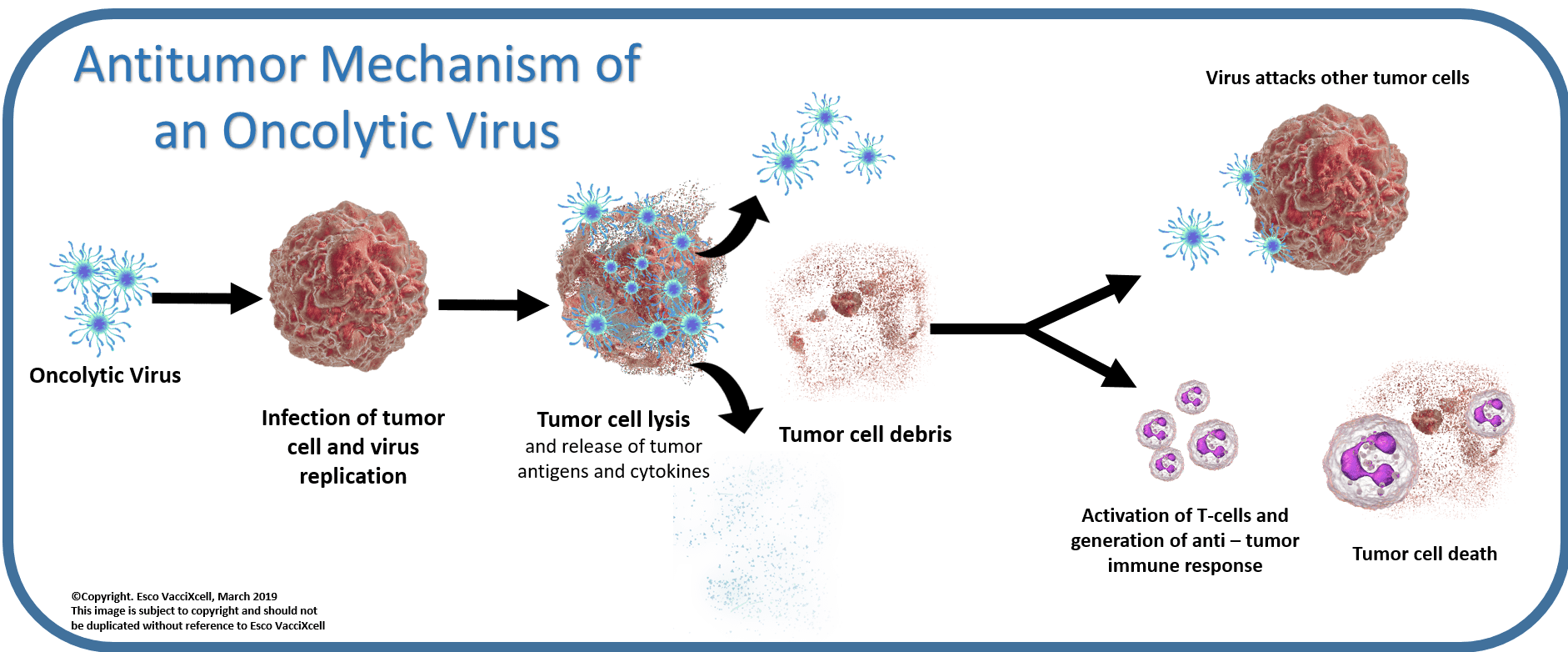Oncolytic Virus Therapy (OVT)

Oncolytic Virus Therapy (OVT): Mechanisms, Applications, and Future Directions
Oncolytic virus therapy (OVT) is a promising cancer treatment that leverages viruses to selectively infect and destroy tumor cells while stimulating an antitumor immune response. Below is a detailed overview of its mechanisms, clinical applications, and challenges, supported by current evidence.
Mechanisms of Action
Direct Oncolysis:
- Selective Infection: OVs target tumor cells by exploiting defects in antiviral pathways or specific receptors overexpressed on cancer cells[1][2].
- Cell Lysis: Viruses replicate within tumor cells, leading to cell death and release of new viral particles to infect adjacent cells[4][5].
Induction of Antitumor Immunity:
- Immunogenic Cell Death (ICD): Oncolysis releases tumor-associated antigens (TAAs) and damage-associated molecular patterns (DAMPs), stimulating immune responses[2][3].
- Immune Activation: OVs enhance immune cell infiltration and function, reversing the immunosuppressive tumor microenvironment (TME)[3][6].
Clinical Applications
Monotherapy:
- T-VEC (Talimogene Laherparepvec): FDA-approved for melanoma, demonstrating improved survival rates[7].
- Limited efficacy as monotherapy due to tumor heterogeneity and immune evasion[1].
Combination Therapies:
- Immune Checkpoint Inhibitors (ICIs): Enhanced efficacy when combined with OVs, as seen in melanoma trials[3].
- Chemotherapy/Radiotherapy: Synergistic effects observed, improving treatment outcomes[1].
Challenges and Future Directions
Delivery and Specificity:
- Intratumoral Injection: Often required for effective delivery; systemic delivery is limited by immune clearance[1][5].
- Genetic Engineering: Designing viruses to target specific tumor receptors or pathways improves selectivity[2][4].
Immune Clearance:
- Antiviral Immunity: Can prematurely eliminate OVs, reducing their therapeutic window[5].
Combination Strategies:
- CAR-Engineered OVs: Enhance targeting and persistence by incorporating chimeric antigen receptors[1].
- Biomarker Development: Use of circulating tumor DNA (ctDNA) to monitor response and resistance[1].
Conclusion
OVT represents a versatile immunotherapeutic approach, leveraging both direct oncolysis and immune activation to combat cancer. While challenges persist, ongoing innovations in genetic engineering and combination therapies are poised to enhance its clinical utility across diverse cancer types.
Consult with Our Team of Experts Now!
At DrStemCellsThailand (DRSCT)‘s Anti-Aging and Regenerative Medicine Center of Thailand, we emphasize comprehensive evaluations and personalized treatment plans of Cellular Therapy and Stem Cells for managing various health conditions. If you have questions about Oncolytic Virus Therapy (OVT) or would like more information on our services, consult with our experts today!
Consult with Our Team of Experts Now!
References















